Our awe-inspiring earth:
26 open collections on JSTOR
Happy Earth Day! We’ve gathered 26 open collections on JSTOR that feature breathtaking documentation of our planet and its creatures by scientists, scholars, and artists across many eras, all free for everyone to enjoy.
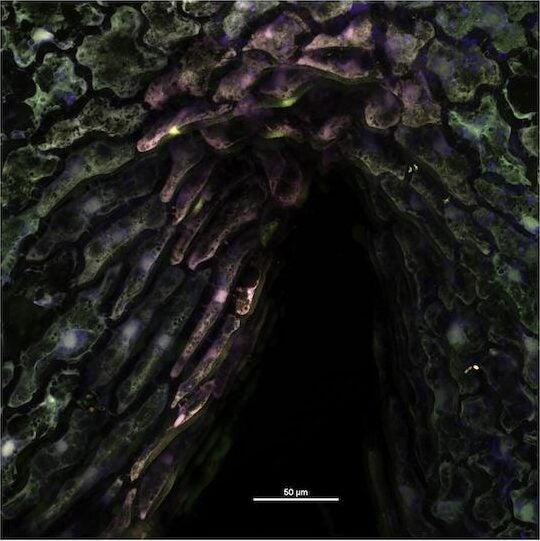
Jill Pflugheber and Dr. Steven White, Desfontainia spinosa, 2019. From the Microcosms: Sacred Plants of the Americas collection.
Microcosms: Sacred Plants of the Americas
Confocal microscopy is a specialized optical imaging technique that provides contact-free, non-destructive measurements of three-dimensional shapes. This collection—at the juncture of art, technology, and science—features plants considered sacred by indigenous groups of the Americas.

Herbert Keightley Job, Multiracial Man Hunting for Young Scaup, N. Manitoba, 1913. From the Trinity College Enders Ornithology Lantern Slides collection.
Trinity College Enders Ornithology Lantern Slides
770 hand-tinted glass plate photographs of birds produced by ornithologist and pioneer wildlife photographer Herbert Keightley Job from 1896-1925.

Uncredited photographer, postcard of Crested Pool and Castle Geyser Cone, Yellowstone National Park, between 1907 and 1920. From Brigham Young University’s Yellowstone II collection
Yellowstone II
A. Dean Larsen and his wife, Jean, collected more than 2,000 books, maps, photographs, and other materials related to Yellowstone, one of the finest private collections of Yellowstone material, containing many scarce and unique items.
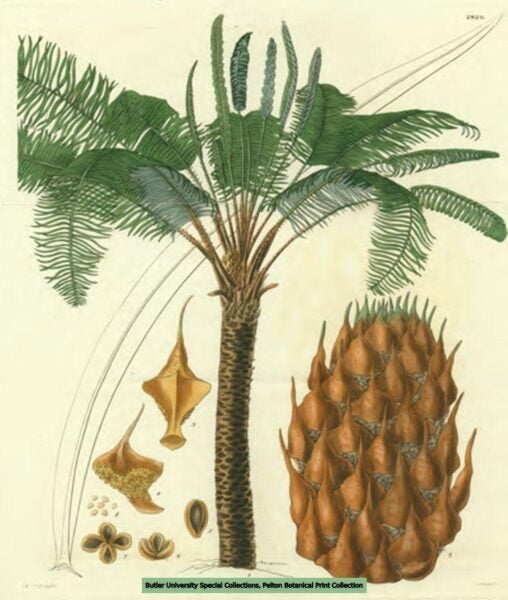
William Curtis, artist, William J. Hooker, engraver, Sago palm, 1828. From the Jeanette Siron Pelton Botanical Prints collection.
Jeanette Siron Pelton Botanical Prints
The collection comprises 71 original plates from herbals, plant histories, and botanical magazines published in the 15th through the 19th centuries, illustrating technological developments in early modern botanical, pharmacological, and medical sciences.

Louise Bush-Brown, Demonstration Garden—Allen Green, ca 1960-1974. From the Pennsylvania Horticultural Society’s Louise Bush-Brown Image Collection.
Pennsylvania Horticultural Society
The McLean Library and Archives is a small research library consisting of collections on horticulture, gardening, urban greening, and related information. Its archives document its nearly 200-year history, including its major activities, the Philadelphia Flower Show, and gardens in the Mid-Atlantic region and around the world.
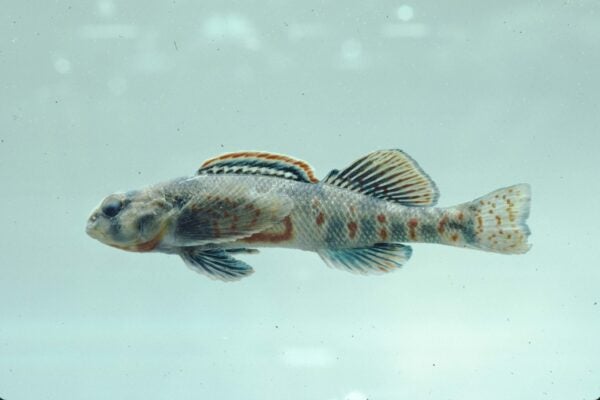
Noel Burkhead, Etheostoma kanawhae (Kanawha darter), 1984. From the Roanoke College Freshwater Fish collection.
Roanoke College Freshwater Fish
More than 800 digitized photographic slides of freshwater fish from Dr. Robert Jenkins, Noel Burkhead, and others, with geospatial data compiled by Roanoke College student Katelyn Bockwoldt.

William R. Mershon, Purple sea fans, Florida and the Cayman Islands, undated. From the Roger Williams University Library’s Underwater Photography collection.
Underwater Photography
Underwater marine biology photographs taken by William R. Mershon, between 1973 and 1987, including corals, crustaceans, sea snails and slugs, sea stars and urchins, sea worms, sponges, and other specimens he observed in Rhode Island’s Narragansett Bay.

Ronald H. McPeak, Asteroidea, Baja California, Mexico, undated. From the Ronald H. McPeak underwater and coastal California photographs collection.
Ronald H. McPeak underwater and coastal California photographs
More than 2,000 35mm color mounted slides taken by Ronald McPeak of the underwater biota of giant kelp forests in California and Baja California, Mexico from 1965 to 1999. There also are images of kelp harvesting in California, salmon spawning in Alaskan streams, and aerial and landscape views of coastal California and its offshore islands.

D. Douglas and G. Walker, Syringa vulgaris L., 1968. From the University of Lethbridge’s Alberta Horticultural Research Centre Herbarium collection.
University of Lethbridge
Among its many collections on JSTOR, the University of Lethbridge in Canada is sharing six herbarium collections comprising more than 36,000 images, as well as a geological collection and an oral history project about Waterton Lakes National Park.
- Alberta Horticultural Research Centre Herbarium
- Alberta Parks – Southern Region Herbarium
- Castle and Castle Wildland Provincial Parks Herbarium
- Lake Louise, Yoho and Kootenay National Parks Herbarium
- University of Lethbridge Herbarium
- Waterton Lakes National Park Geological Collection
- Waterton Lakes National Park Herbarium
- Waterton Lakes National Park Oral History Project
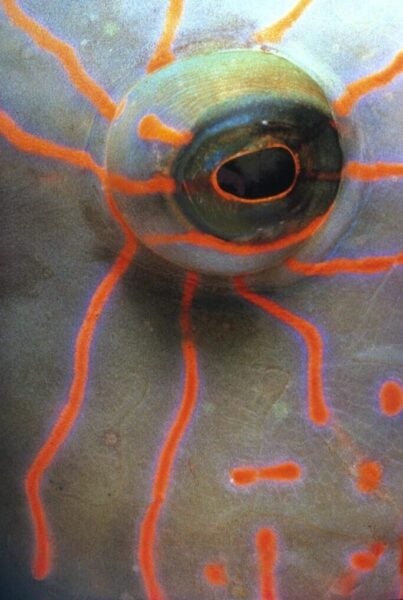
Unknown photographer, Wrasse from the Red Sea, 20th C. From RISD’s Nature Forms collection.
Fleet Library at RISD
- Manning Rare Woods
The collection contains boards of rare species of outstanding beauty and value. The magnification views found in this collection are from wood shaving samples of the endgrain, tangent, and radial planes at x100 and x400 to reveal the intricate cellular structure of each species. - Nature Forms
A collection of micro and macro imagery describing forms in nature including landforms, minerals, aquatic, and terrestrial animal and plant life, insects, cellular structures and skeletal segments from the Edna W. Lawrence Nature Lab.
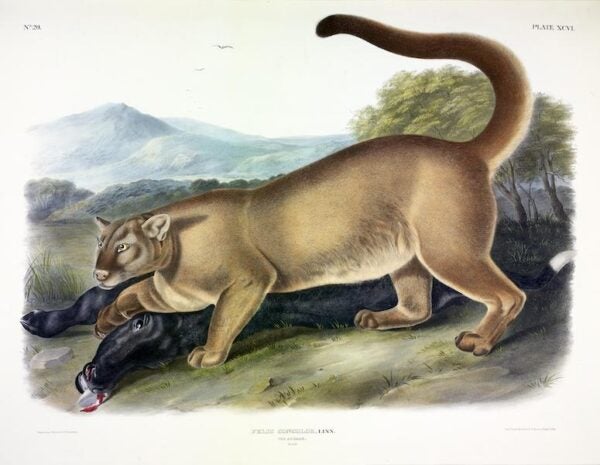
John James Audubon, Felis Concolor, Linn. Cougar (male), plate from The Viviparous Quadrupeds of North America, 1846. From the John James Audubon’s Birds of America and Viviparous Quadrupeds collection.
University of Michigan
- U of M Museum of Zoology, Reptiles and Amphibians Predator and Prey Collection
High resolution images of snake predators and their prey, characterizing ecological patterns in the evolution of neotropical snake diets. - John James Audubon’s Birds of America and Viviparous Quadrupeds
Exquisitely hand-colored intaglio and lithographic prints from Audubon’s two renowned scientific works: The Birds of America (published between 1827 and 1838) and The Viviparous Quadrupeds of North America (published between 1845 and 1848).

David O. Brown, Leopold Blaschka, Rudolf Blaschka, Histioteuthis reversa (Jewel Squid). From the Cornell Collection of Blaschka Invertebrate Models.
Cornell University
- Cornell Collection of Blaschka Invertebrate Models
Collection of 251 glass invertebrates created by renowned 19th-century glass artists Leopold and Rudolf Blaschka. - Historic Glacial Images of Alaska and Greenland
Cornell professor Ralph Stockman Tarr (1864-1912) and his students and collaborators organized several expeditions to glaciated areas in Greenland and Alaska, capturing photographs that can now be compared with contemporary photographs to document the glaciers’ changes over time, particularly due to global warming. - Finger Lakes Harmful Algal Bloom Micrographs
In 2020, Dr. Ruth Richardson of Cornell University and Dr. Lisa Cleckner of the Finger Lakes Institute (FLI) at Hobart and William Smith Colleges collaborated on a research project to assess the genetic information of harmful algal blooms (HABs) in the Finger Lakes, specifically, microcystis and its ability to produce toxins. As part of this study, volunteers were trained in sampling and microscopy techniques to collect data for the research of HABs community composition and how it changes throughout the season. - Plant Pathology Herbarium (CUP)
The collection covers the last 120 years of plant pathology, mycology, and agricultural practice. Many photographs document the preserved specimens of fungi and plant diseases, making them uniquely useful for biological research, while others illustrate agricultural equipment, scientists, and their experiments. - Hill Ornithology Collection
The collection traces the development of ornithological illustration in the 18th and 19th centuries and highlights the changing techniques from metal and wood engraving to chromolithography during that period. Images include illustrations in books from Cornell University Library’s Hill Ornithological Collection along with artworks on loan to the university. - Laboratory of Ornithology Gallery of Bird and Wildlife Art
Images from the Lab’s art collection, featuring more than two centuries of work by bird artists such as Alexander Wilson, John James Audubon, and Louis Agassiz Fuertes.